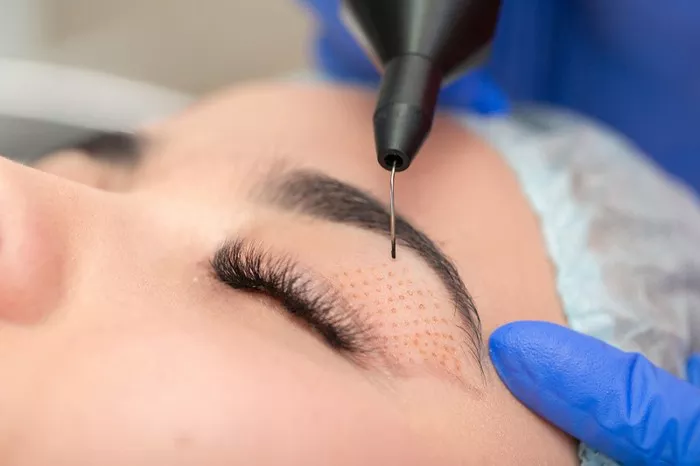Blepharoplasty, also known as eyelid surgery, is a cosmetic procedure that aims to rejuvenate the appearance of the eyelids by removing excess skin, fat, and muscle. Like any surgical procedure, swelling is a common side effect of blepharoplasty. If you’re considering eyelid surgery, it’s natural to wonder how long the swelling will last and what to expect during the recovery process. In this article, we will explore the duration of swelling after blepharoplasty and provide insights into the healing timeline.
Understanding Swelling After Blepharoplasty
Swelling is a natural response of the body to trauma or surgery. During blepharoplasty, incisions are made on the eyelids, and the underlying tissues are manipulated. This can lead to swelling, which typically occurs in the immediate post-operative period and gradually subsides over time.
Immediate Post-Operative Period
In the first few days following blepharoplasty, swelling is generally at its peak. The eyelids may appear puffy, and the surrounding tissues can feel tight and uncomfortable. It is important to follow your surgeon’s post-operative instructions during this initial phase, which may include applying cold compresses, keeping your head elevated, and taking prescribed medications to manage pain and swelling.
First Week to Two Weeks
During the first week to two weeks after blepharoplasty, the swelling should gradually decrease. However, it is normal to experience some residual swelling and bruising during this time. The extent and duration of swelling can vary depending on individual factors such as the extent of the surgery, the patient’s overall health, and their adherence to post-operative care instructions.
Many patients find that their swelling and bruising improve significantly within the first two weeks, allowing them to feel more comfortable and confident. However, it is important to note that each individual’s healing process is unique, and some degree of swelling may persist beyond the initial two-week period.
Two Weeks to Several Months
From the two-week mark onwards, the majority of visible swelling should have subsided. However, it is not uncommon for residual swelling to persist for several months, albeit at a much milder level. The rate of resolution varies among individuals, and factors such as genetics, lifestyle habits, and overall health can influence the duration of swelling.
During this phase, it is important to continue following your surgeon’s recommendations for post-operative care. This may include avoiding strenuous activities, protecting the eyes from sun exposure, and using prescribed topical ointments or eye drops to aid in healing.
Long-Term Healing
While most visible swelling resolves within the first few weeks to months after blepharoplasty, it is important to note that the complete healing process can take several months to a year. During this time, the tissues continue to settle and refine, and the final results of the surgery become more apparent.
It is crucial to maintain patience and realistic expectations during the healing process. It is common for minor fluctuations in swelling to occur, especially after activities that increase blood flow or cause temporary fluid retention. Your surgeon will guide you through the healing journey and provide you with a timeline for when you can expect to see the final results.
Tips for Reducing Swelling
While some degree of swelling is normal after blepharoplasty, there are steps you can take to help minimize and manage it:
- Cold Compresses: Applying cold compresses to the eyes in the immediate post-operative period can help reduce swelling. Follow your surgeon’s instructions on when and how to apply cold compresses safely.
- Elevation: Keeping your head elevated, especially while sleeping, can help reduce swelling. Prop yourself up with pillows to maintain an elevated position.
- Avoiding Strenuous Activities: Avoid activities that can increase blood flow to the face, such as heavy lifting, strenuous exercise, and bending over, during the initial healing period.
- Follow Post-Operative Instructions: Adhere to your surgeon’s post-operative care instructions diligently. This may include taking prescribed medications, using topical ointments, and attending follow-up appointments.
- Protecting from Sun Exposure: Shield your eyes from direct sunlight and wear sunglasses with UV protection when going outdoors. Sun exposure can potentially exacerbate swelling and prolong the healing process.
When to Consult Your Surgeon
While swelling is a normal part of the healing process after blepharoplasty, there are instances when you should contact your surgeon:
- Excessive or Prolonged Swelling: If you experience severe or persistent swelling that does not improve over time, it is best to consult your surgeon for further evaluation.
- Increased Pain or Discomfort: If you have increasing pain or discomfort accompanied by worsening swelling, it is important to notify your surgeon, as it may indicate a complication or infection.
- Vision Changes: If you notice any changes in your vision, such as blurriness or double vision, it is essential to seek immediate medical attention.
Your surgeon is the best resource for assessing your healing progress and addressing any concerns you may have throughout the recovery period.
Conclusion
Swelling is a normal part of the healing process after blepharoplasty, and its duration can vary from person to person. While initial swelling is most pronounced in the first few days following surgery, it gradually subsides over time. Visible swelling typically improves significantly within the first two weeks, with residual swelling continuing to diminish over several months. It is important to follow your surgeon’s post-operative care instructions, be patient, and allow your body ample time to heal. Remember to consult your surgeon if you have any concerns or experience unusual symptoms during the recovery period.

